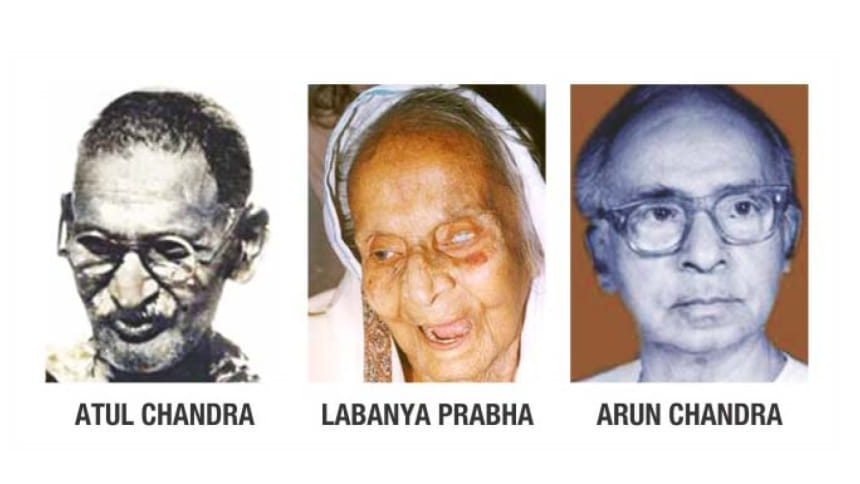From the Archives: The rise of Purulia

Bangla bhasha praner bhashare/Marbi tora ke tare/Ei bhashatei kaj cholecche/ Saat purusher amole/ Ei bhasahatei mayer kole/ Mukh futecche ma bole … (My Bangla, O the language of my soul// Who dares to wipe you out// It's this language// that worked for us for seven generations// And we gone to sleep in our mother's arms// And called her Ma.)
This is a Tusu song. Like Jhumur and Bhadu, Tusu is a variety of folk songs from Purulia. Tusu songs are sung for whole night of Makar Sankranti, the last day of the month of Paush in Bangla calendar.
Like many other folk numbers, traditional Tusu songs pass from generation to generation. In most cases, the original lyricists or composers remain unknown.
But since the late 1940s till mid-1950s, Purulia, then Manbhum, gave birth to some never-heard-before Tusu songs, totally different in lyrical contents. They dealt with political and social issues and gave expression to a movement that, too, was never seen before. The one mentioned at the beginning of the article is one such song.
Although a tribal area, Manbhum had a significant Bangalee population, speaking its mother tongue and practising its own culture. Even the various tribes spoke Bangla.
An erstwhile part of Bengal presidency, Manbhum was placed under Bihar state after the 1947 partition. The Bangla-speaking people of Manbhum received a shock. God knows whose idea this was, the state imposed restrictions on the use of their mother tongue!
Bangalee officers were transferred to the other districts of Bihar. A ruling was issued to teach Hindi from primary classes; Bangla department was closed in the local zila school. Hindi was made compulsory for notice boards in schools and businesses. Hindi was declared the official language of Manbhum district. Do they all sound too familiar?
They do. The announcement that Urdu would be the official state language triggered serious discontent among the Bangalee population of the then East Pakistan and gave rise to the Great Bhasha Andolon of 1948-52.
Likewise, the Bangalees in Manbhum could not accept Hindi being imposed upon them. On June 14, 1948, the Lok Sevak Sangha was established to protect Bangla language as well as to fight the state policy of forcible imposition of Hindi.
The Sangha started demonstrating at various levels in various forms. The most remarkable form was the Tusu Satyagraha Andolan -- a cultural revolution, a political fight, and an anti-authoritarian social agitation and a language movement, all at once. Love for own language and culture was at its core.
US folk legend Pete Seeger once said, "Throughout history, the leaders of countries have been very particular of what songs should be sung. We know the power of songs."
And the Manbhum people knew the power of their songs. Almost every corner of it was reverberated with Tusu songs, solely dedicated for the movement. A book titled "Tusu Gaaney Manbhum" was a very significant publication of the time. All of its one lakh copies sold fast. One song in particular turned iconic: "Shun Bihari bhai/ Tora rakhte larbi dang dekhai/ Tora apon tore bhed barali/ Bangla bhasay dili chhai… (Hark, hey brother of Bihar// You can't chain us; we've no fear// For your own sake this thick wall you drew// And ashes in my Bangla threw.)
Music was the main weapon of the Tusu Satyagraha Andolon. While the movement was nearing its peak, the Bihar state government let lose repression. 1954 was the fiercest year for the activists. Torture and arrest of men and women involved in the movement were a daily matter. Rallies were banned. But the agitation never stopped.
Finally, the central government declared the formation of the "State Re-Organisation Commission". In 1955, the commission proposed the formation as well as the accession of a new district "Purulia," dominated by Bangla-speaking people, to West Bengal from the erstwhile Manbhum of Bihar.
This drew mixed reactions. Pro-Bihar activists called strikes in Manbhum for 17-20 June 1956. Pro-Bengal activists were not very happy either with the proposed accession of Dhanbad district to Bihar.
In the meantime, Chief Minister of West Bengal Bidhan Chandra Roy and Chief Minister of Bihar Shrikrishna Singh came up with a unique proposal of unification of West Bengal with Bihar.
In protest, the Lok Sevak Sangha started a non-violent march on foot, the famous "Padyatra", to Kolkata from Pakbirra village on April 20, 1956. The procession of 1,005 supporters reached Kolkata on May 7, 1956, and the authorities readily put them in jail.
Subsequently, the proposal for unification of West Bengal with Bihar was withdrawn. The "Bengal-Bihar Border Demarcation" bill was passed in parliament on August 17, 1956, and in Rajya Sabha on August 28, 1956.
Finally, with 16 police stations, 2,007 square mile area and a population of 11,69,097, the new district of Purulia was acceded to West Bengal on November 1 that year.
THE LEGENDS
Atul Chandra Ghosh, president of the Lok Sevak Sangha from its inception, was the chief architect of the march. He was a prominent figure also during the freedom struggle of the colonial era.
His wife Labanya Prabha Ghosh, lovingly addressed as "Manbhum Janani" (mother of Manbhum) by the people of Purulia, was another top leader of the language movement. The Bihar government sent her to jail several times.
Their eldest son Arun Chandra Ghosh was another noted figure. He also edited "Mukti," the first Bangla bi-weekly from Manbhum, till his death. The publication played a great role during the movement.
Sources: Purulia district portal; article of Dr Shanti Singh; Indian newspapers and sites

 For all latest news, follow The Daily Star's Google News channel.
For all latest news, follow The Daily Star's Google News channel. 



Comments